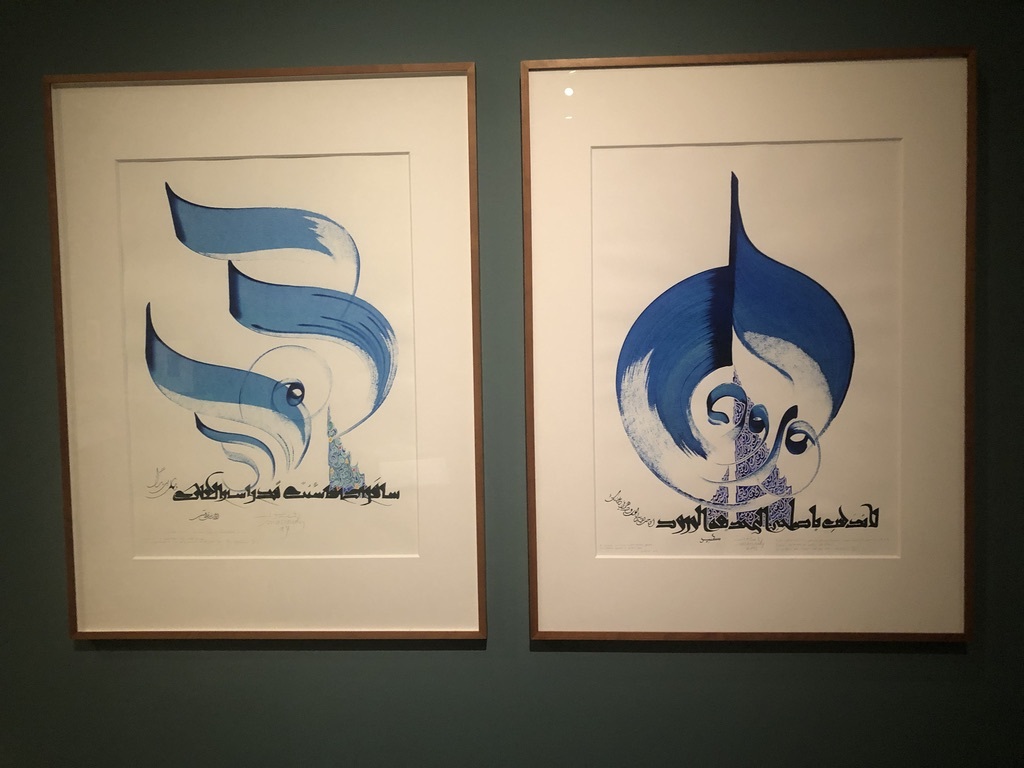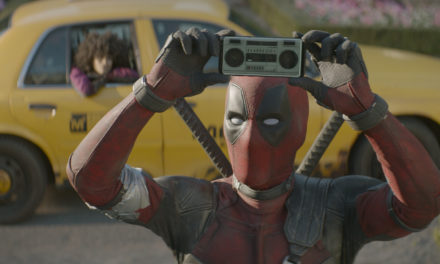“Wondrous Worlds: Art & Islam Through Time & Space” is frankly the most appropriate title for the newest rotating exhibition at the Michael C. Carlos Museum, on view through May 9. I was filled with awe as I meandered through the galleries, feeling like I entered a new time and space with every piece I approached.
The exhibition beautifully connects the worlds of domestic life, clothing, ceremonial adornments, writing and religious architecture to paint a holistic image of the world of Islam and its global influence. The collection of artworks was comprehensive, ranging widely in age, geographical location and medium. Not only was there a great diversity in artworks, but also a sense of unity between them. The curators didn’t explicitly separate objects by typical categories, allowing that diversity to shine; the galleries weren’t organized in chronological order, location or medium, allowing the objects to interact and complement each other with their differences and similarities.
Initially, I didn’t know what to expect, since the Carlos Museum doesn’t have a permanent curator in Islamic art. I soon learned the museum had partnered with scholars of Islamic art and the Newark Museum of Art, who first organized the exhibition, to best honor the meaning, diversity and uniqueness of Islamic art and identity.

“Harem #1” (2009) by Lalla Essaydi. (The Emory Wheel/ Zimra Chickering)
Viewers entering the exhibition cannot ignore the striking image of a woman in the harem of the Dar al-Basha palace in Morocco taken by Lalla Essaydi, a renowned photographer who captures the complexities of gender and power in the world of Islam. This photo is a vividly detailed and modern photographic interpretation of women’s roles in the harem, a space of safety and also sometimes oppression. The exhibition begins with this modern photographic interpretation of Isalmic art, and it concludes with a vast aluminum sculpture by Afruz Amighi, created in 2016, continuing to contextualize modern Islamic art and identity. History, memory and contemporaneity are gracefully intertwined.
Further into the galleries, there’s a section entitled “Internationalisms: Now and Then,” the most eye-opening part of the exhibition. I was unaware of the ways in which international trade spread the word, practices, language and artistic styles of Islam to countries as wide-ranging as Holland, Ghana and China.
The concept of international Isalmic art influences is often lost in Islamic art galleries nationwide, as Middle Eastern calligraphic or ceramic artworks dominate the scene and are automatically associated with Islamic art. While such artworks were included in this exhibition, as they should be, Indonesian textiles, contemporary artworks, American paintings and Chinese sculptures that reflect the broad impact and meaning of Islamic art were just as prominent.
For example, Essaydi’s artistic reflection on feminism shows how Islamic art is far more than the turquoise calligraphy some may picture it to be. It can just as easily be large-format photographs that examine the formation of female community in Islamic spaces through the reframing of the harem as a shared safe space. From the eighth to 18th century, Muslim groups controlled many global trade routes, promoting shared visual imagery and style between vastly different cultural regions; that allowed Islamic art references to become apparent in artworks one would often assume to be disconnected from Islam, like the ceramic Chinese tomb soldier.

“Hooded Equestrian of a Foreigner as a Tomb Figure.” (The Emory Wheel/Zimra Chickering)
The collection’s wide selection of objects was most notable in the section entitled “Elegant Epigraphy: Writing as Art,” which also housed one of the exhibition’s most visually impactful pieces. This section featured everything from books and pens to sculptures and swords, all utilizing calligraphy to profess the faith of Islam, one of the four pillars of the religion. My breath was taken away by two watercolor calligraphy works displaying famous Sufi poems in a contemporary fashion. The luscious royal blue brushstrokes of the Arabic letters hypnotize viewers into an endless and voluptuous sea of blue. I felt emotionally moved by the intention of the poems, even though I could not read them; the language of the visual transcended the language of words.

“Oh friend, don’t go to the flower garden. The flower garden is within you.” (2013) and “Travel, if you aspire to a certain renown. It is in roaming the heavens that the crescent becomes the full moon.” (1997) by Hassna Massoudy. (The Emory Wheel/Zimra Chickering)
If you want to take a wondrous journey through time, space and medium of Islamic art, I encourage you to visit the “Wondrous Worlds: Art & Islam Through Time & Space” exhibition at the Carlos Museum. Even going in with no expectations — from the gallery order, to the descriptive labels, to the diverse artworks — my heart, brain and eyes left pleased and illuminated.
Zimra Chickering (24C) is a born and raised Chicagoan who studies art history and nutrition science. She is also a student docent for the Michael C. Carlos Museum, Woodruff JEDI Fellow, educational committee chair for Slow Food Emory, and Xocolatl: Small Batch Chocolate employee. Zimra loves cooking, visiting art museums, photography, doing Muay Thai, drinking coffee, and grocery shopping. She uses writing as an outlet to reflect upon issues and oppurtunities within artistic institutions, and the unique ways in which food and art can act as communicators of culture.







